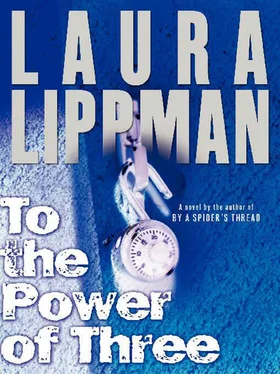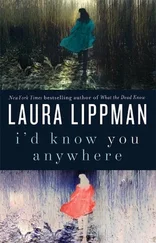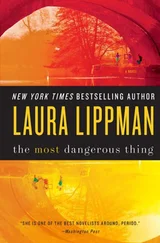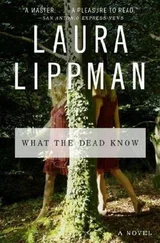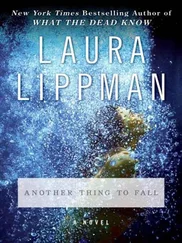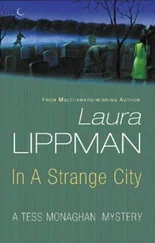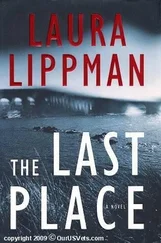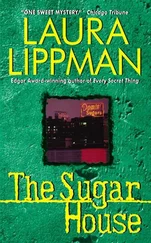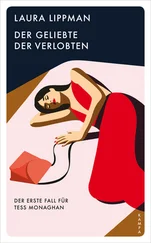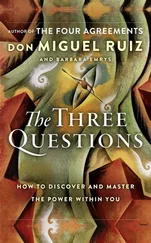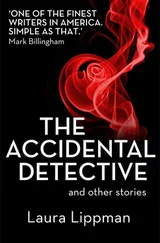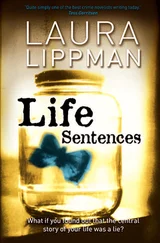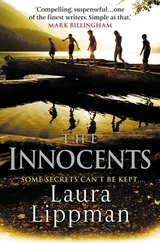
Laura Lippman
To The Power Of Three
FOR NANCY GOLDMAN GREENBERG
My Life had stood-a Loaded gun
-In Corners-till a Day
The Owner passed-identified-
And carried Me away-
…
Though I than He-may longer live
He longer must-than I-
For I have but the power to kill,
Without-the power to die
– EMILY DICKINSON
Three can keep a secret, if two are dead.
– BENJAMIN FRANKLIN
People would want to knowwhat she was thinking, the night before. They always do, or think they do-but in her case they would have been disappointed. Because by the night before, the thinking was long over and she was preoccupied mainly with logistics. Planning, preparing, packing. Finding her old knapsack, an orange-and-black JanSport she hadn’t used for months, not since Christmastime.
Knapsacks had gone out of fashion that spring at Glendale High School, at least among the stylish girls. The divas, as they were known-they had bestowed the name on themselves and considered it laudatory-had taken to carrying plastic totes in bright primary colors, see-through and flimsy. Even the name-brand versions, the ones that cost upwards of a hundred dollars, buckled under the weight the divas expected them to carry. But then it’s a myth that more expensive things are better made-or so her father always said, whenever she expressed a desire for something trendy. At the mall she had seen diva mothers storm into Nordstrom or Hecht Co., proclaiming the totes defective. “What was she using it for?” skeptical salesladies inquired, examining the torn and stretched-out handles beneath the fluorescent lights. “The usual,” lied the mothers. “Girl stuff.”
In the end the salesladies didn’t care if the mothers stretched the truth as far as those rubbery handles, because they always left with even more merchandise-not only a replacement tote or two but those hideous Louis Vuitton billfolds that were so unfathomably popular that spring, maybe a small cosmetic bag in the same distinctive-tacky pattern. They needed cosmetic bags because the totes had another design flaw. The not-quite-opaque plastic allowed the world to see whatever one carried. Forget trying to bring Tampax to school, or even a hairbrush. (She had always considered hairbrushes one of the more horrible secrets that regular purses kept-oily, matted with hair, shedding those strange little scales.) Yet perhaps that was the very source of the totes’ cachet: To use one, you had to pretend you had no secrets, that your life was an open book-or, more correctly, a see-through purse. You couldn’t put anything in those totes that you didn’t want other people to glimpse.
Especially a gun, no matter how small. Even a gun wrapped in a scarf, as hers would be.
The problem was that she, too, had abandoned her knapsack earlier that school year, although she was not one to follow the trends, quite the opposite. She had different reasons for retiring her trusty JanSport. I am putting away childish things, she told herself in November, having been reminded of that Bible verse while rereading a favorite childhood novel. Her mother had gotten a canvas bag at Barnes & Noble, one with Emily Dickinson’s face, and she had co-opted it for a joke, just to test how ignorant everyone was. (“Is that someone you know?” “Is that you ?” “A relative?”) She hadn’t planned to use it every day, but then her parents began to nag, said she was going to throw her spine out of alignment or damage the nerves in her shoulder. Then she had to keep using it, if only to prove to them that it was her spine, her nerves, her life.
Except the Emily Dickinson bag was forever falling over, scattering its contents. She couldn’t afford such accidents or missteps, not on the day she took her gun to school.
She finally found her knapsack at the back of her closet, and it was a kind of relief to be reunited with her old, practical friend. She dampened a paper towel and ran it over the bag’s insides, removing debris from last fall-cookie crumbs, specks of chocolate, a lone Brazil nut, which would have been there since September, when she tried to go vegan and lasted all of a week. She had carried this knapsack for four years, from fall of eighth grade to the fall of twelfth grade, and its surface-the names and former loyalties inked onto its orange nylon, the rips and tears-was a vivid reminder of how much she had changed. You probably shouldn’t get tattooed, her mother always said. You don’t know who you’re going to be when you’re thirty . But a tattoo can be concealed, or even removed with lasers. Piercings close up if you give them enough time. A knapsack covered with embarrassing sentiments in permanent ink could only be discarded or replaced. Her parents would have purchased her a new one if she had only explained her reasons, but that was one thing she hadn’t dared to do. She was tired of explaining herself.
Once the bag was clean inside, she surveyed the things laid out on her bed. There was her notebook, the take-home test for Mrs. Downey, her independent study project for Ms. Cunningham. And there was the gun, wrapped in a silk scarf from the old dressup chest.
The gun had been in her possession for almost a month, but the mere sight of it still shocked her. It was so like the toy six-shooter she had begged for when she was little, not even four. Why had she yearned for a gun, a holster, and a cowboy hat at such an age? She had wanted to be Calamity Jane or Annie Oakley, marching around the house singing “Anything You Can Do, I Can Do Better.” Yes, it was queer, but then everyone was queer when little. And maybe she had wanted to shock her parents, who weren’t hippies but were antiwar, even this current one, which a lot of Glendale parents had said was okay when it started.
Standing in her bedroom, a real gun in her hand, she finally understood how toddlers could pick up a weapon and fire, with no instruction or training. The gun she had taken was just like her old toy-six chambers for six bullets, each one dislodged by pressing the trigger. Or so she assumed, because she hadn’t dared to fire it, not even once. There was no place she wouldn’t be overheard. Once Glendale had had large tracts of woods, areas where a kid could hide, escape the world for a little while. But those spots had been mowed down, leveled, replaced with strip malls and parking lots, just like the song said. She had really liked that song before her parents told her it was a cover, that the Counting Crows hadn’t done it first, that they had listened to it, too, when they were even younger than she was now. Her parents meant well, but sometimes she wanted something that was all for her. Was that so much to ask?
The gun had come with four bullets, which seemed an odd number to her, not that she could ask how that came to be. How many bullets are in the gun, Chino? That was a line from West Side Story, Maria’s big moment at the end. She was never the kind of girl who got to play Maria, nor did she want to be. Namby-pamby “I Feel Pretty” Maria, totally reactive. It had been stealing, of course, to take the gun, but then the people who owned it had broken laws, too. It should have been in a safe and equipped with a childproof lock. She had written a paper on state gun laws for history last year, arguing strenuously for a true ban on all firearms. The rednecks had been outraged, of course. Not that there were many rednecks in AP American history.
Читать дальше
